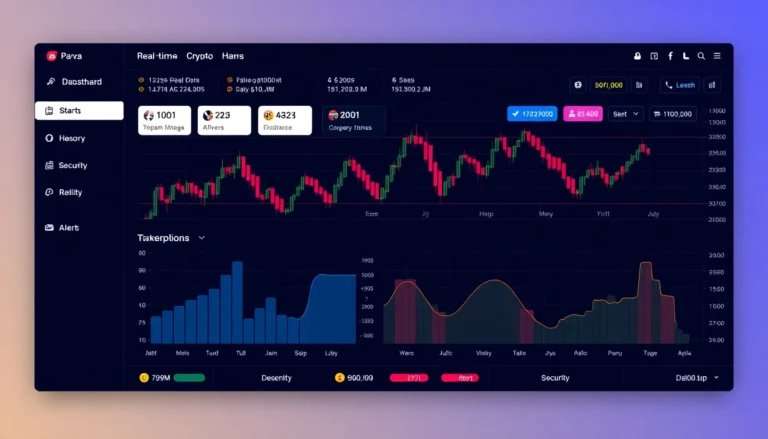Understanding Trekking: Definition and Characteristics
Trekking has become an increasingly popular outdoor activity, captivating adventurers and nature lovers alike. It offers a unique blend of physical challenge, mental resilience, and immersive natural experiences. But what exactly is trekking, and how does it differ from other outdoor pursuits like hiking? This article will delve into the detailed aspects of trekking, highlighting its characteristics, unique features of Indonesian routes, and how to prepare for a successful expedition. Whether you’re a beginner eager to explore or an experienced trekker looking to deepen your knowledge, this comprehensive guide provides everything you need to walk confidently into your next adventure.
What Makes Trekking Different from Hiking?
While the terms “trekking” and “hiking” are often used interchangeably, they embody distinct outdoor activities with nuanced differences. Understanding these distinctions is crucial for planning your adventure appropriately and setting expectations.
According to reputable sources such as Halodoc, hiking typically refers to a walk undertaken for leisure, usually spanning a few hours to a day, on well-marked trails, with minimal technical challenges. It emphasizes enjoying scenic views, light physical effort, and accessible terrain.
In contrast, trekking is characterized by longer journeys that may last multiple days, often through rugged, remote, or less accessible environments. As summarized by Kayak Guatemala, trekking involves walking or hiking through wilderness areas, often in mountainous or difficult terrain, requiring significant physical fitness, mental stamina, and careful planning.
Moreover, while hiking is generally a casual or recreational activity, trekking demands a higher level of preparation — including gear, navigation skills, and sometimes, logistical planning like accommodations and supplies. Trekking routes often involve periods of self-sufficiency and overcoming natural obstacles that test endurance and resilience.
To summarize, hiking is a shorter, more leisurely activity, while trekking is an intensive, multi-day expedition through challenging environments. Recognizing these differences helps adventurers choose routes suitable for their fitness levels and experience, ensuring safety and enjoyment.
Key Features of Indonesian Trekking Routes
Indonesia, a vast archipelago composed of over 17,000 islands, offers some of the most diverse and scenic trekking routes in the world. From volcanic peaks to lush forests and stunning waterfalls, Indonesian trekking routes are renowned for their natural beauty and cultural richness.
1. Rugged Terrain and Volcanic Landscapes
Many Indonesian treks revolve around active and dormant volcanoes. For example, Mount Rinjani in Lombok is Indonesia’s second-highest volcano and a favorite for seasoned trekkers. Its crater lake, geothermal areas, and panoramic views offer a challenging yet rewarding experience. Trekking in these volcanic landscapes requires stamina, proper gear, and sometimes, permits due to national park regulations.
2. Dense Rainforests and Biodiversity Hotspots
Sumatra, Kalimantan, and parts of Sulawesi feature tropical rainforests teeming with wildlife, flora, and fauna. Trekkers can explore ecosystems that support orangutans, tigers, hornbills, and endemic plant species. Navigating these lush environments demands knowledge of navigation skills, respect for conservation, and appropriate equipment such as insect protection and lightweight trekking gear.
3. Hidden Trails and Cultural Encounters
Indonesia’s diverse cultures and indigenous communities often live along trekking routes, providing opportunities for authentic cultural exchanges. Trails in destinations like Sentul or the remote villages around Lake Toba offer a blend of natural exploration and cultural immersion. Respectful engagement and understanding local customs are essential to responsible trekking in these areas.
4. Waterfalls and Coastal Treks
Spectacular waterfalls, such as those in Curug area or near Ujung Kulon, attract trekkers seeking natural beauty and serenity. Coastal routes along beaches and islands like Gili or Bawean are perfect for combining trekking with snorkeling or diving, creating multi-activity outdoor experiences.
In summary, Indonesian trekking routes stand out for their geological diversity, ecological richness, and cultural depth, making them ideal for a wide range of outdoor enthusiasts seeking adventure, discovery, and natural marvels.
Types of Trekking Activities Suitable for Beginners and Pros
Whether you are just starting out or are an experienced adventurer, Indonesia’s trekking offerings cater to all levels. The key is selecting routes aligned with your fitness, experience, and interest.
1. Beginner-Friendly Treks
Accessible trekking spots such as Sentul’s forest trails or the easier routes around Lake Toba are excellent for beginners. These routes focus on enjoying nature, learning basic navigation, and experiencing the outdoors without extreme challenges. Essential tips include starting with guided tours, acclimatizing to the climate, and packing light.
2. Intermediate and Advanced Treks
More challenging options include ascents of Mount Rinjani or trekking through the jungles of Sumatra, which demand better physical conditioning and technical skills. These treks often require planning for overnight stays in tents or simple accommodations and can last several days. Proper training, acclimatization, and hiring experienced guides are crucial for safety and success.
3. Specialized Trekking Activities
Beyond simple hikes, Indonesia offers activities like glacier trekking on volcanic glaciers, canyoning in waterfalls, or multi-day jungle explorations. These require specialized equipment, advanced skills, and sometimes, permits or special training.
In essence, selecting the right trekking type depends on personal skill level, the environment, and available resources. Starting with guided beginner tours and gradually increasing difficulty provides a safe and enjoyable progression into serious trekking pursuits.
Preparing for a Successful Trekking Expedition
Physical Fitness and Mental Readiness
Preparation begins long before setting foot on the trail. Physical conditioning—focused on endurance, strength, and balance—is foundational. Exercises like stair climbing, long-distance walking, and core workouts enhance stamina. Mental fitness is equally important; developing resilience, patience, and adaptability ensures you respond well to unforeseen challenges such as weather changes or navigation difficulties.
Consistency, gradual training, and mental visualization of the trek help build confidence. Additionally, understanding your limits and listening to your body prevents injuries and exhaustion.
Gear and Equipment Recommendations
Investing in quality gear tailored to your trek ensures safety and comfort. Essential items include:
- Durable hiking boots with ankle support
- Lightweight, moisture-wicking clothing layered for climate adaptability
- Reliable backpack with hydration system
- Navigation tools like maps, compass, or GPS device
- Emergency supplies including first aid kit, whistle, and multi-tool
- Sleep gear—compact sleeping bag and tent if camping
- Sun protection: hat, sunglasses, sunscreen
- Insect repellent and water purification tablets
Permits, Guides, and Safety Measures
In Indonesia, some routes, particularly within protected parks or national reserves, require permits. Always verify local regulations before your trip. Hiring experienced local guides enhances safety, provides cultural insights, and ensures compliance with conservation efforts.
Safety protocols include informing someone about your itinerary, carrying communication devices, staying on marked trails, and being prepared for weather shifts. Emergency contacts and local health facilities should also be identified in advance.
Top Trekking Destinations in Indonesia
Mount Rinjani: The Iconic Volcano Trek
Mount Rinjani stands as Indonesia’s second-highest volcano, offering one of the most celebrated trekking experiences. The trek spans 3–4 days, covering diverse terrains: volcanic craters, lush forests, hot springs, and panoramic caldera views. The ascent is physically demanding, but the reward is breathtaking vistas and the accomplishment of conquering a challenging summit. Guided tours are recommended for safety, and permits are required to access the national park.
Sentul’s Hidden Trails and Natural Beauty
Located in West Java, Sentul provides accessible yet scenic trekking options suited for beginners and families. Trails pass through tropical rainforests, waterfalls, and caves, promoting eco-tourism and local engagement. The area’s moderate difficulty and proximity to Jakarta make it ideal for weekend trips and introductory treks.
Curug Waterfalls: Trekking to Spectacular Naturals
Indonesia boasts many waterfall destinations accessible via trekking routes. For example, the Curug Cilember or Tumpak Sewa Waterfalls provide rewarding hikes leading to stunning cascades. These treks often involve crossing rivers, walking through dense forests, and enjoying refreshing natural pools, making them perfect for nature enthusiasts and families alike.
These destinations exemplify the rich variety of Indonesian treks—each offering unique sights, terrains, and cultural experiences that appeal to trekkers of varying skill levels and interests.
Best Practices for Engaging in Trekking Activities
Leave No Trace and Conservation Tips
Responsible trekking emphasizes preserving natural environments for future generations. Follow the Leave No Trace principles:
- Plan ahead and prepare
- Travel and camp on durable surfaces
- Dispose of waste properly, minimizing trash and waste pollution
- Leave what you find—avoid removing natural or cultural artifacts
- Respect wildlife—observe from a distance and do not feed animals
- Be considerate of other visitors and local communities
Navigational Skills and Trail Etiquette
Mastering basic navigation—using maps, compasses, or GPS devices—ensures safety, especially in remote areas. Respect trail etiquette by yielding to uphill trekkers, maintaining a steady pace, and avoiding loud disturbances that could impact wildlife or fellow trekkers.
Managing Physical Challenges and Overcoming Obstacles
Encountering natural obstacles like steep inclines, river crossings, or sudden weather changes is common. Learning proper techniques—such as using trekking poles, adjusting your pace, and staying hydrated—helps mitigate risks. Developing mental toughness and flexibility allows trekkers to adapt swiftly and safely to changing conditions.
Health Benefits and Future of Trekking in Indonesia
Physical and Mental Health Improvements
Engaging in trekking provides extensive health benefits. Physically, it enhances cardiovascular endurance, muscular strength, and stamina. Mentally, it reduces stress, boosts mood, and promotes mindfulness by immersing individuals in natural surroundings. Regular trekking can also improve sleep quality and foster a sense of accomplishment.
Growing Community and Eco-Tourism Initiatives
Indonesia’s trekking community is expanding, driven by eco-tourism and sustainable travel initiatives. Local communities actively participate by offering guided tours, homestays, and cultural experiences, ensuring economic benefits and conservation support. Initiatives focus on minimizing environmental impact and promoting responsible tourism.
How to Start Your Own Trekking Adventure
For beginners eager to start trekking, begin with day hikes in local areas, gradually increasing distance and difficulty. Join guided tours, invest in quality gear, and educate yourself on safety and environmental practices. Connect with local guides and communities to enrich your experience and ensure responsible travel. Over time, as skills and confidence grow, plan multi-day treks to explore Indonesia’s vast wilderness further.





